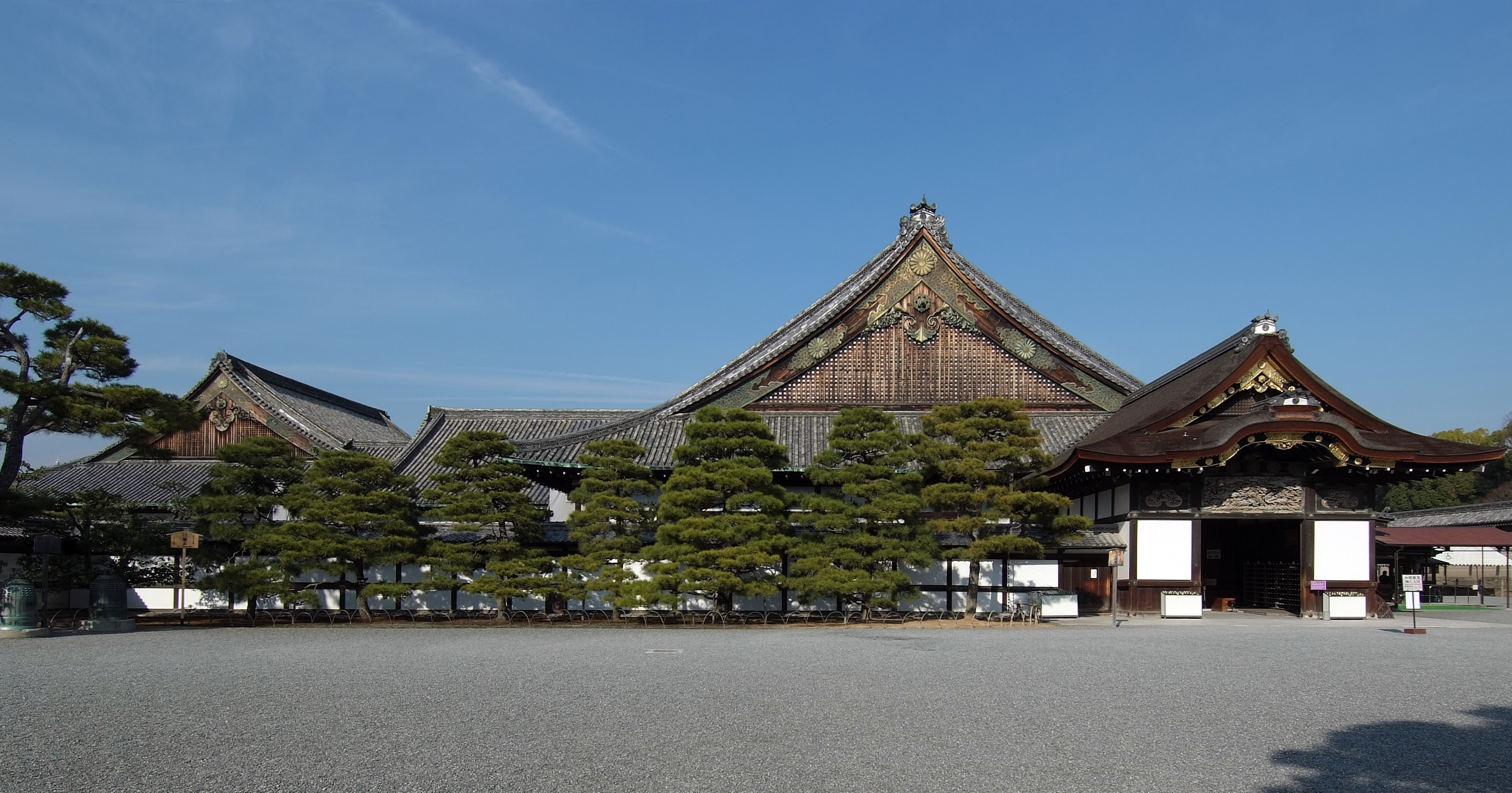Nightingale floor on:
[Wikipedia]
[Google]
[Amazon]
 ' are floors that make a chirping sound when walked upon. These floors were used in the hallways of some temples and palaces, the most famous example being
' are floors that make a chirping sound when walked upon. These floors were used in the hallways of some temples and palaces, the most famous example being
 The floors were made from dried boards. Upside-down V-shaped joints move within the boards when pressure is applied.Japan-Guide.com, Nijo Castle under "Kyoto Travel: Nijo Castle".
The floors were made from dried boards. Upside-down V-shaped joints move within the boards when pressure is applied.Japan-Guide.com, Nijo Castle under "Kyoto Travel: Nijo Castle".
Information, photos and video-clip of Nightingale floors
{{Japanese architectural elements Floors Japanese architectural features Security engineering
 ' are floors that make a chirping sound when walked upon. These floors were used in the hallways of some temples and palaces, the most famous example being
' are floors that make a chirping sound when walked upon. These floors were used in the hallways of some temples and palaces, the most famous example being Nijō Castle
is a flatland castle in Kyoto, Japan. The castle consists of two concentric rings ( Kuruwa) of fortifications, the Ninomaru Palace, the ruins of the Honmaru Palace, various support buildings and several gardens. The surface area of the castle is ...
, in Kyoto
Kyoto (; Japanese language, Japanese: , ''Kyōto'' ), officially , is the capital city of Kyoto Prefecture in Japan. Located in the Kansai region on the island of Honshu, Kyoto forms a part of the Keihanshin, Keihanshin metropolitan area along wi ...
, Japan. Dry boards naturally creak under pressure, but these floors were built in a way that the flooring nails rub against a jacket or clamp, causing chirping noises. It is unclear if the design was intentional. It seems that, at least initially, the effect arose by chance. An information sign in Nijō castle states that "The singing sound is not actually intentional, stemming rather from the movement of nails against clumps in the floor caused by wear and tear over the years". Legend has it that the squeaking floors were used as a security device, assuring that none could sneak through the corridors undetected.
The English name "nightingale" refers to the Japanese bush warbler, or ''uguisu'', which is a common songbird in Japan.
Etymology
refers to the Japanese bush warbler. The latter segment comes from , meaning "to stretch". Together this means "the sound of a Nightingale from the stretching/swelling/straining f the floor.Construction
 The floors were made from dried boards. Upside-down V-shaped joints move within the boards when pressure is applied.Japan-Guide.com, Nijo Castle under "Kyoto Travel: Nijo Castle".
The floors were made from dried boards. Upside-down V-shaped joints move within the boards when pressure is applied.Japan-Guide.com, Nijo Castle under "Kyoto Travel: Nijo Castle".
Examples
The following locations incorporate nightingale floors: *Nijō Castle
is a flatland castle in Kyoto, Japan. The castle consists of two concentric rings ( Kuruwa) of fortifications, the Ninomaru Palace, the ruins of the Honmaru Palace, various support buildings and several gardens. The surface area of the castle is ...
, Kyoto
Kyoto (; Japanese language, Japanese: , ''Kyōto'' ), officially , is the capital city of Kyoto Prefecture in Japan. Located in the Kansai region on the island of Honshu, Kyoto forms a part of the Keihanshin, Keihanshin metropolitan area along wi ...
* Chion-in
in Higashiyama-ku, Kyoto, Japan is the headquarters of the Jōdo-shū (Pure Land Sect) founded by Hōnen (1133–1212), who proclaimed that sentient beings are reborn in Amida Buddha's Western Paradise (Pure Land) by reciting the '' nembutsu'', ...
, Kyoto
* Eikan-dō Zenrin-ji ''For other temples by similar names, see Zenrin-ji.''
Eikan-dō Zenrin-ji (永観堂禅林寺) is the head temple for the Seizan branch of Japan's Jōdo-shū (Pure Land) Buddhist sect, located in Kyoto, Sakyō-ku. It was founded by Shinshō, a ...
, Kyoto
* Daikaku-ji
is a Shingon Buddhist temple in Ukyō-ku, a western ward in the city of Kyoto, Japan. The site was originally a residence of Emperor Saga (785–842 CE), and later various emperors conducted their cloistered rule from here. The '' Saga Go- ...
, Kyoto
Modern influences and related topics
* Melody Road in Hokkaido, Wakayama, and Gunma * Singing Road in Anyanag, Gyeonggi South Korea * Civic Musical Road in Lancaster, California * Across the Nightingale Floor, 2002 novel by Lian HearnNotes
References
* A-Z Animals. "Uguisi" under "Animals". (2008). accessed November 3, 2012. http://a-z-animals.com/animals/uguisu/. * Bunt, Jonathan and Gillian Hall, ed. Oxford Beginner's Japanese Dictionary. New York: Oxford University Press, 2000. * Henshall, Kenneth G. A Guide to Remembering Japanese Characters. Vermont: Tuttle Publishing Company, 1998. * Japan-guide.com. "Nijo Castle (Nihojo)" under "Kyoto Travel: Nijo Castle" (June 11, 2012). accessed November 3, 2012. http://www.japan-guide.com/e/e3918.html. * Saiga-Jp.com. "Japanese Kanji Dictionary" under "Japanese Learning" (March 7, 2012). accessed November 4, 2012. https://web.archive.org/web/20101029180930/http://www.saiga-jp.com/kanji_dictionary.html. * ZenGarden.org. "Nightingale Floor, 'Uguisu-bari' ( 鴬張り )" (2012). accessed September 24, 2012. http://www.zen-garden.org/html/page_nightingalefloor.htm.External links
Information, photos and video-clip of Nightingale floors
{{Japanese architectural elements Floors Japanese architectural features Security engineering